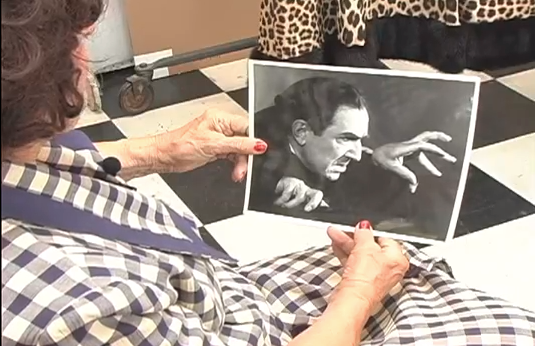AARP Hearing Center
The Photographer Whose Celebrity Portraits 'Are Forever'
By Steve Mencher, November 7, 2013 04:55 PM
You may have encountered Editta Sherman as a larger-than-life character in the 2010 documentary film about her fellow Carnegie Hall resident, Bill Cunningham ( Bill Cunningham New York). The two photographers were friends for decades, and part of their special bond was living in a unique artists colony above America's most famous concert hall.
See a New York Times slideshow of Sherman and her work

When I worked at Carnegie in the 1980s, Sherman, who died on Nov. 1 at the age of 101, was one of its best-known residents, living and working in a top floor studio that exuded class and nostalgia and seemed inhabited by numerous ghosts. The apartment, with its black-and-white checkered floor, showcased her photographs of the 20th century's top actors, musicians, writers and other luminaries, including Carl Sandburg, Boris Karloff, Angela Lansbury, Mary Martin, Henry Fonda, Charlton Heston, Tyrone Power and Joe DiMaggio. "Her portraits are forever," writer Somerset Maugham, who sat for Sherman, observed.
Her Raymond Massey has a faraway look, and a cigarette. Bela Lugosi's fingers reach out menacingly. As she photographed him, Lugosi said: "My dear, you are beautiful enough to be bitten."
Here's a lovely video of Sherman - known as the "Duchess of Carnegie Hall" - from about five years ago, showcasing her unique personality. Warmly welcoming anyone into her world, her only request was that you listen to her stories. They were well worth the time.
Sherman was one of many artists who lived and created art above Carnegie Hall. Shortly after the hall was opened in 1891, industrialist and philanthropist Andrew Carnegie realized the impossibility of running the venue on ticket receipts alone. His brilliant idea was to create more than 100 studios - many with a strong, steady northern light that appealed especially to visual artists - in two residential towers above the concert hall. The rent from the tenants subsidized the music in the auditorium below.
Charles Dana Gibson, the illustrator whose wasp-waisted "Gibson girls" defined American beauty at the turn of the century, worked in a Carnegie Hall studio; so did Joe Raposo, who composed Kermit the Frog's anthem "It's Not Easy Being Green" at his Steinway there; Isadora Duncan danced in her Carnegie Hall studio; and Enrico Caruso "made his first American recording for the Victor Talking Machine Company in 1904 in Studio 826," according to the New York Times.
For musicians like conductor Leonard Bernstein, the answer to the riddle "How do you get to Carnegie Hall?" was "Walk downstairs."
But the economics of Carnegie Hall changed in the 21st century, and management decided that all the remaining artists must move. Sherman was among the last to decamp, after a bitter struggle, in 2010. "My whole life has been here," Sherman told the Times, as she left after 61 years of living and working on West 57th Street and Seventh Avenue.

Images: Courtesy of Susan R. Roberts/YouTube
Also of Interest
- John Spence: Fighting Frogman, Passes Away at Age 95
- 10 Drugs That May Cause Memory Loss
- Questions about the Affordable Care Act? Get your answers here
- Join AARP: Savings, resources and news for your well-being
See the AARP home page for deals, savings tips, trivia and more































































